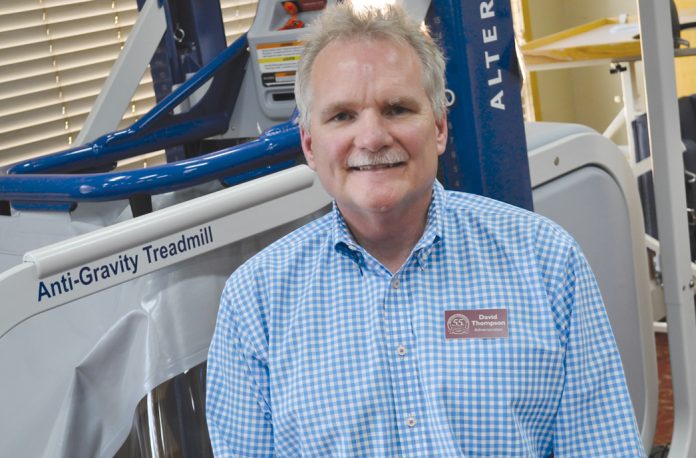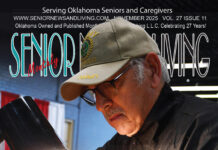
by Bobby Anderson
Staff Writer
David Thompson remembers 30 years years ago when patients drove themselves to Bellevue Health and Rehabilitation.
Now, more often than not, they arrive in the back of an ambulance. And the diagnoses they bring with them include IVs, feeding tubes and care plans that look more medical surgical than rehabilitative.
But for generations now the Thompson family has answered the call to take care of Oklahomans.
And in a healthcare environment that’s pushing more and more care outward and away from a traditional hospital setting. The family-owned business doesn’t plan on changing its mission anytime soon.
“I’ve been in this business a long time and … there’s been a paradigm shift,” Thompson said. “We’ve got to be ready so we have to have good quality nursing and they need to be more like the hospital nurse.”
“They need to identify things before they become a problem.”
FAMILY AFFAIR
Thompson has been in the family business for 32 years. Back when he started there was no Medicare or Medicaid payments.
“Everyone paid their own way,” he said. “They were really the assisted living patients. Residents had cars and then over the years it just progressed.”
Thompson’s mom and dad started the business in the early 1950s.
Four of the children including David still work at Bellevue. Five grandchildren also work full-time throughout the center.
It takes some 230 staff members overall to get the job done.
“We staff really well. My dad always told me patient care comes first,” said Thompson, who notes Bellevue is among the top one percent in the country in terms of staffing ratios.
Founded in 1954, Bellevue is a 220-bed facility located in Oklahoma City, in close proximity to all local hospitals. Through the years, Bellevue has continued to grow and evolve to meet community needs, and today offers a full continuum of care, from temporary respite stays, to short-term rehabilitation, to long-term skilled nursing care, as well as a broad array of specialty programs and services.
TREMENDOUS GROWTH
Thompson remembers when Bellevue did 100 admissions a year.
That occurs in a month now with an almost equal number of discharges.
The number of skilled beds has blossomed from 20 to 62.
IVs, wound vacs, Stage IV wounds, specialty beds and peg tubes are now commonplace.
TPN will come soon.
“For whatever reason Medicare is pushing everyone to skilled,” Thompson said. “We’ve stepped our game up a whole lot.”
The continued money crunch from the federal government has demanded facilities like Bellevue become higher-skilled facilities. And with increased scrutiny on readmission rates the responsibility for end patient outcomes has also shifted.
“I see Medicare putting such strict guidelines on the LTACs now. (Patients) have to have three midnights in an ICU. We used to be able to send a patient to an LTAC,” Thompson said. “I think Medicare is pushing everyone to skilled because it is probably less expensive.”
According to CMS, hip and knee replacements are the most common inpatient surgery for Medicare beneficiaries and can require lengthy recovery and rehabilitation periods.
In 2014, there were more than 400,000 procedures, costing more than $7 billion for the hospitalizations alone. Despite the high volume of these surgeries, quality and costs of care for these hip and knee replacement surgeries still vary greatly among providers.
The Comprehensive Care for Joint Replacement (CJR) model aims to support better and more efficient care for beneficiaries undergoing the most common inpatient surgeries.
The CJR model holds participant hospitals financially accountable for the quality and cost of a CJR episode of care and incentivizes increased coordination of care among hospitals, physicians, and post-acute care providers.
“It’s a lot of pressure on everyone because we can’t send someone home with multiple co-morbidities that still needs skilled care,” Thompson said.
That’s why Bellevue has invested heavily in people and technology. The massive new AlterG Anti-Gravity treadmill stands out in the therapy room as testimony.
The treadmill removes up to 80 percent of a patient’s weight, allowing them to focus on joint mobility and strengthening without fear of fall or reinjury.
It also shortens the road to recovery.
But overall, the focus has always been on people.
“It comes down to helping people,” Thompson said. “The patient comes first.”













